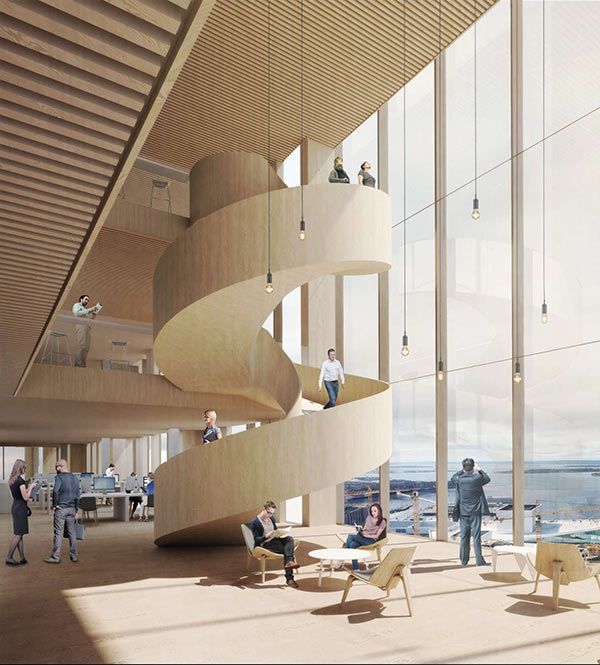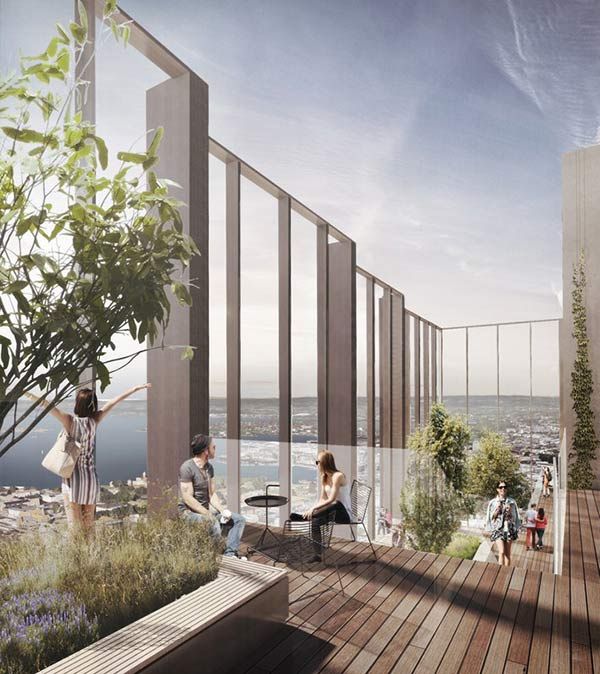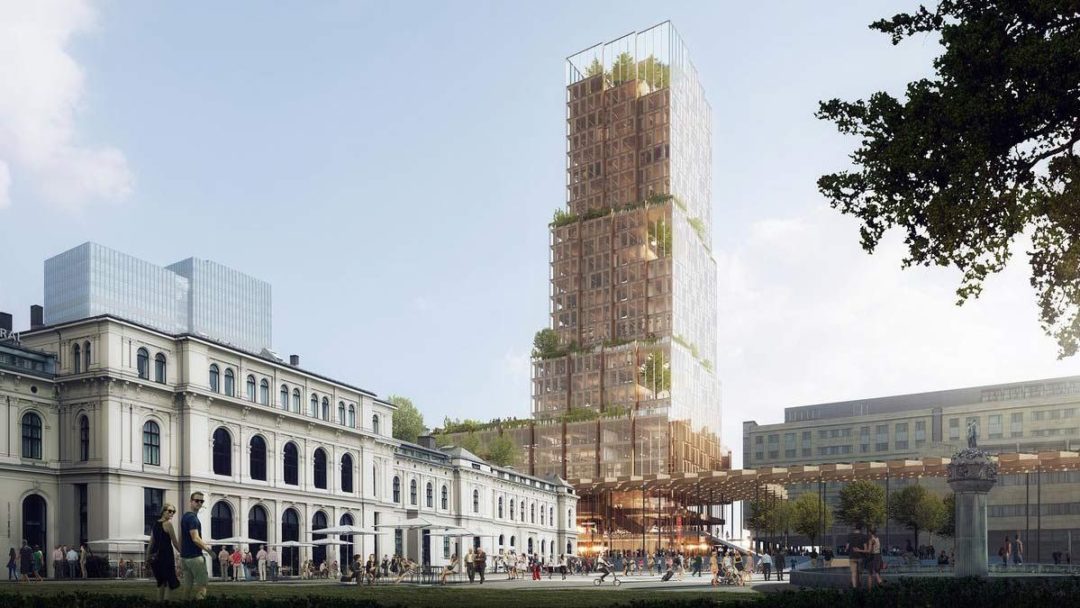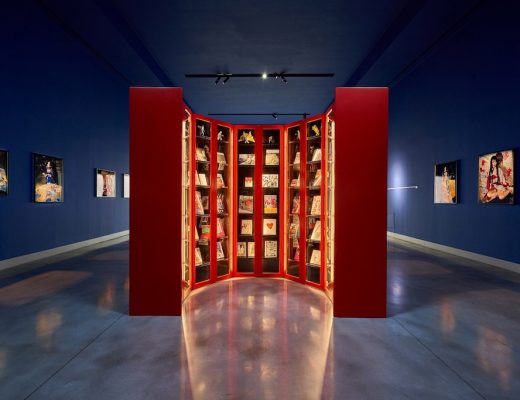The Norwegian capital is widely regarded as a pioneer in using wood as a building material. In fact, it’s claimed that Oslo was once made of wood. The redesign of the station area brings the traditional building material back to the Scandinavian metropolis whose history dates back several thousand years.

While medieval Oslo was a city built predominantly of wood. After the great fire of 1624, the city was relocated and rebuilt, with the Renaissance period as a reference point. Around this time, builders eschewed wood and embraced brick trusses and stone. However, recently, there has been a shift and people have started using the traditional building material again. This is also the case with the pioneering fjord porten urban development project of C.F. Møller Architects and Reiulf Ramstad Arkitekter AS.

In terms of timber construction, Norway holds the world record for building the world’s tallest wooden skyscraper In the small town of Brumunddal, 140 kilometres north of Oslo. Standing 85.4 metres tall, the 18-storey mixed-use building called Mjøstårnet was built without a concrete core.


The tallest timber tower in the world is currently under construction in Tokyo and expected to be completed in 2041. The 350 metre tall tower, tentatively named the Plyscraper W350, is being built by timber building materials giant Sumitomo Forestry to mark its 350th anniversary.

Back in Oslo, the new urban development project Fjordporten Oslo S aims to further promote sustainable urbanisation using timber construction. In 2017, Bane NOR Eiendom, a subsidiary of the state railway company, announced an architecture competition. The brief on the project was that in addition to the future-proof construction method, the design should interact with the surroundings and offer a good infrastructure for the further development of the district.
The master plan “Nordisk Lys” (Nordic Light) by Reiulf Ramstad Architects and CF Møller Architects beat competitors such as Bjarke Ingels and Christoph Ingenhoven. The central element of the winning design is a tree-covered tower with stacked cubatures. At the foot of the high-rise, a pergola made of honeycomb wooden elements connects the highrise structure with the surrounding public space.
The wooden structure of the skyscraper is packed into a glass facade that reveals the lush, planted areas inside and outside the building. The floors are repeatedly interrupted by vertical openings in the room which, with their vegetation, are intended to function as “green lungs”. These gigantic winter gardens with wooden spiral stairs will be visible from afar.
The type of construction is a hybrid construction. Wood and concrete are combined to create the structure of the building. The large facade of the tower is made of high-tech glass, say the architects and explain: “The building’s materials are a subtle reference to a time when the city was made of wood.”
“The strength of Nordic Light lies in its clear and careful form of expression,” said the jury. For travellers, the planned hub will offer a new kind of experience and a positive spatial experience. “Fjordporten at Oslo Central Station combines transport, work, leisure, culture and business into a future-proof and strong center,” says CF Møller in its project description. Its main goal is to combine effective transport logistics with attractive public spaces. This is achieved through high architectural quality and well-thought-out transfers between the individual modes of transport.
You might also like:




